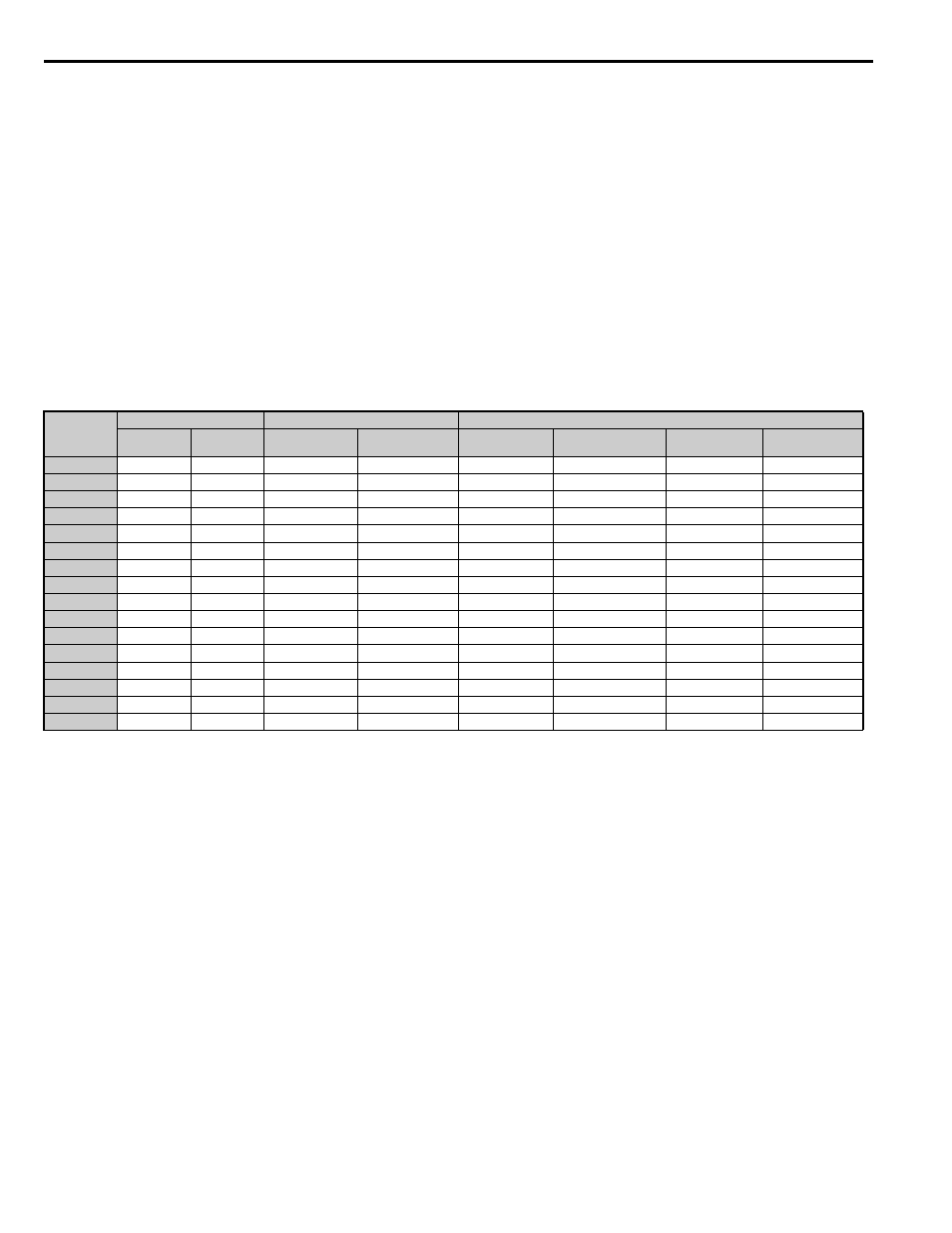7 h: terminal functions, Are applicable to the corresponding settings – Yaskawa L1000E AC Drive Technical Manual for CIMR-LE Models for Elevator Applications User Manual
Page 196

5.7 H: Terminal Functions
196
YASKAWA ELECTRIC SIEP YAIL1E 01A YASKAWA AC Drive L1000E Technical Manual
Setting 20 to 2F: External fault
The External fault command stops the drive when problems occur with external devices.
To use the External fault command, set one of the multi-function digital inputs to any value between 20 to 2F. The digital
operator will display EF where is the number of the terminal to which the external fault signal is assigned.
For example, if an external fault signal is input to terminal “EF3” will be displayed.,
Select the value to be set in H1- from a combination of any of the following three conditions:
• Signal input level from peripheral devices (N.O., N.C.)
• External fault detection method
• Operation after external fault detection
The following table shows the relationship between the conditions and the value set to H1-:
Terminal statuses, detection conditions, and stopping methods marked with an
“ O ”
are applicable to the corresponding
settings.
Setting 50: Nominal speed
Closing a terminal set for “Nominal speed” makes the drive run at the speed reference set to d1-19. Conditions change,
however, according to the speed selection mode set in d1-18.
Refer to Multi-Speed Inputs 1, 2 (d1-18 = 0 or 3) on
for details.
Setting 51: Intermediate speed
Closing a terminal set for “Intermediate speed” makes the drive run at the speed reference set to d1-20. This setting can
also be used in combination with other input terminals set for 50 (Nominal speed) and 52 (Releveling speed) to switch
between the speed reference set in d1-21 and d1-22. Conditions change, however, according to the speed selection mode
set in d1-18.
Refer to Multi-Speed Inputs 1, 2 (d1-18 = 0 or 3) on page 121
Setting 52: Releveling speed
Closing a terminal set for “Releveling speed” makes the drive run at the speed reference set to d1-23. Conditions change,
however, according to the speed selection mode set in d1-18.
Refer to Multi-Speed Inputs 1, 2 (d1-18 = 0 or 3) on
for details.
Setting
<1> Determines the terminal status for each fault, i.e., whether the terminal is normally open or normally closed.
<2> Determines whether detection for each fault should be enabled only during run or always detected.
Terminal Status
Detection Conditions
Stopping Method
N.O.
N.C.
Always Detected
Detected during
Run only
Ramp to Stop
(fault)
Coast to Stop
(fault)
Fast Stop
(fault)
Alarm Only
(continue running)
20
O
O
O
21
O
O
O
22
O
O
O
23
O
O
O
24
O
O
O
25
O
O
O
26
O
O
O
27
O
O
O
28
O
O
O
29
O
O
O
2A
O
O
O
2B
O
O
O
2C
O
O
O
2D
O
O
O
2E
O
O
O
2F
O
O
O